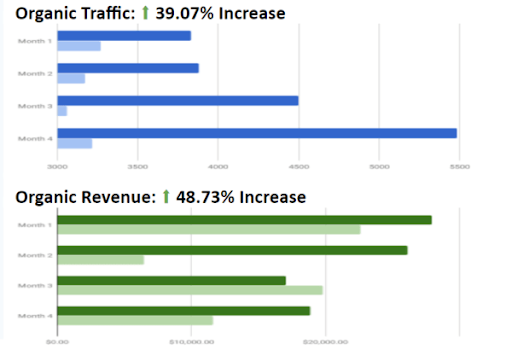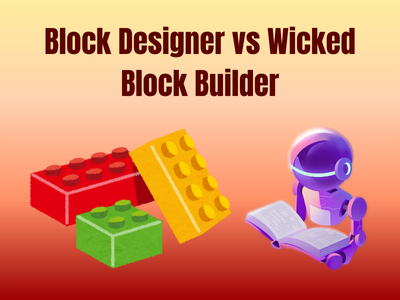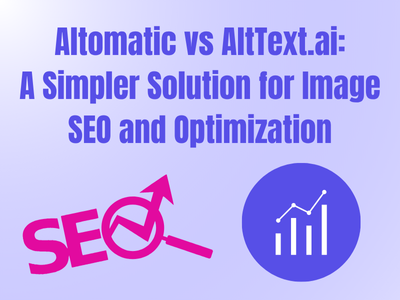Ever walked into a store with a big shiny sign out front… but once inside, the lights were dim, the aisles were a maze, and nobody helped you find what you needed?
When a business concentrates only on SEO and ignores CRO, that’s what happens.
Now, let’s switch things around.
Imagine a store with perfect lighting, friendly staff, and a checkout experience so smooth it feels like magic… except it’s hidden in a back alley with no sign and no directions to get there.
That’s great CRO with zero SEO. A beautiful experience that nobody knows exists.
SEO is like the bright, eye-catching sign and window display that draws people in. Or the people in the streets telling you this is a great place to shop. CRO is the tidy shelves, clear prices, helpful staff, and a checkout that doesn’t make you want to cry.
If you’ve ever wondered which one matters more, or if you’re stuck choosing between bringing in traffic or getting better conversions, here’s the truth: you don’t need to choose. You need both.
Ask any eCommerce conversion company. They’ll tell you the same thing. It’s not just about getting visitors. It’s about guiding them through the entire experience, from landing on the page to checking out with confidence.
Interested? Let’s go.
What Is SEO and What Is CRO?
Let’s make this easy.
SEO helps people find your website. It’s what gets you to show up when someone Googles “best running shoes” or “how to get rid of toenail fungus.” It’s keywords, content, page speed, links, and all the little behind-the-scenes tweaks that make your site visible to search engines.
CRO comes into play once the visitor arrives. It’s all about guiding them to take action—whether that’s making a purchase, signing up, clicking a button, or whatever your goal might be. Think clear calls to action, helpful layouts, trust signals, and forms that don’t feel like filing taxes.
In simple terms? SEO helps people find you. CRO gives them a reason to stay and say yes.
They’re part of the same journey, just at different stops.
SEO vs CRO: What’s the Difference?

The key difference? They answer different questions:
SEO answers: How do I get more people here?
CRO answers: They’re here. How do we make them buy?
You can absolutely run them separately, but they work a lot better when they’re aligned. We’ll get into that next.
How SEO and CRO Work Together
These two aren’t separate strategies living in different corners of your marketing plan. They work best when they’re in sync.
When your SEO brings in the right kind of traffic, CRO steps in to make sure they stick around, explore, and eventually convert.
And here’s where things get interesting.
CRO doesn’t just help conversions. It actually boosts your SEO too. Google wants to serve results that satisfy search intent. (And I hope you, too!) If your site is fast, mobile-friendly, and easy to use, it ticks those boxes. And those are all things CRO improves.
So, the better your CRO, the more search engines like your site. It becomes this nice little loop where SEO brings people in, CRO helps them engage, and that engagement signals back to Google that your site deserves even more traffic.
Traffic goes up. Conversions go up. Everyone’s happy.
Case Study: How One Bank Turned Blog Readers into Leads

First State Community Bank had a good thing going. Their team had put together a solid blog packed with helpful articles on personal finance, business banking, and more.
The problem? Hardly anyone was reading it. And the few who did? They weren’t turning into leads.
They teamed up with SmartBug Media to figure out what was missing. The solution wasn’t just better blog posts. It was the combination of SEO and CRO working together.
Here’s what they did:
- SEO clean-up. They went back and optimized old blog posts with better keywords, clearer formatting, and headlines that actually matched what people were searching for.
- CRO upgrades. Each post got smart CTAs. Things like signup prompts, offers, and next steps that made sense for the topic.
- Lead nurturing. They didn’t stop at one click. They created premium downloads and follow-up emails to keep people engaged after that first action.
The results were quite wild:
- Blog views shot up by 1,346%
- Overall website visits through the blog rose 219%
- And most importantly, the bank finally hit its lead goals
This wasn’t a viral post or a lucky break. It came from making content simpler to discover and easier for people to use or take action on. One without the other wouldn’t have worked. Together, they turned a quiet blog into a lead-generating machine.
Case Study: How One Online Store Fixed Traffic and Sales at the Same Time

An e-commerce brand (they’re anonymous in this case) had a solid product and happy customers, but traffic was stalling and conversions weren’t great. People either weren’t showing up, or when they did, they weren’t buying.
So they teamed up with The Search Guru to sort it out. Instead of throwing money at ads or redesigning the whole site, the team focused on two things: SEO to bring in more qualified visitors and CRO to make the site easier to shop.
Here’s what changed:
- They found and fixed pages that were ranking for the wrong keywords.
- They improved product pages so they matched what people were actually searching for.
- They made the mobile experience smoother, faster, and easier to use.
- And they ran tests to see which layouts and buttons helped more people finish the checkout.
After four months, here’s the magic that happened:
- Organic traffic went up by 39%
- Revenue from search increased by 48%
- Desktop conversions jumped 77%
- Mobile conversions exploded by 442% (just… wow)
No gimmicks. Just solid SEO and CRO working together.
Tips for Integrating SEO and CRO
Start with your top pages
Not all pages are worth the same effort. Focus your CRO and SEO work where it’ll move the needle fastest. Here’s a good order to follow:
Focus 70% of your efforts on these and 30% on others. (Classic pareto rule!)
- Pages that already rank well and convert: These are your MVPs. Even a small boost in conversion rate here can lead to big results.
- Pages that rank well but don’t convert: Your queens of potential. If they’re pulling in traffic but not turning visitors into customers, CRO is exactly what they need.
- Pages that rank in positions 4 to 10 or on page two: These are your low-hanging fruits. They’re almost there. A bit of SEO plus CRO love can help them climb and convert.
- High-value product or service pages with good search potential: Even if they’re not ranking yet, they’re worth optimizing for search engines and conversions early if their high price tags and viewer potential tie directly to revenue.
Take Search Intent Seriously
Put yourself in your audience’s place. If you Google “best workout gloves,” are you hoping to read a 2,000-word guide or just compare a few products fast? Your page should match what the searcher expects.
Here’s how to nail it:
- Make sure the headline reflects the search intent. It should be the biggest, clearest text on the page.
- Follow up with a supporting description that spells out the benefit of your product. They do not care if your product has won over 9000 awards or your company is voted “best place to work.” They just want to know if your product can solve their problems.
- Include real-life shots of the product in action. Not office people high-fiving and no (gasp) stock photos.
- For articles, immediately show the information they need. Skip the backstory or lengthy explanations. If you REALLY need to add those, put them at the bottom of the article. Good stuff first, accessories last.
Make Your CTA and Social Proof Count
Help visitors navigate with ease.
- Your CTA should grab attention immediately. Big, clear, and visible without scrolling too much. For blog posts, put your relevant CTA in the middle and at the end of each article.
- Add social proof near it. Reviews, ratings, testimonials, or even “X bought this today” notes can nudge people over the line.
Let Data Point You to CRO Problems
Sometimes traffic might not be the problem. The real issue starts after visitors land on your site.
If a page is ranking well and pulling in visitors, but bounce or exit rates are high, that’s a big red flag. Something’s off. Maybe the page is slow, the content doesn’t match the search intent, or the layout just isn’t working.
Start by looking at:
- High-ranking pages with low time-on-site: Look for pages that have less than 30 seconds of engagement.
- Landing pages where users frequently leave without scrolling: A bounce rate above 70% can be a sign that the page isn’t delivering what people expect.
- Blog posts with good traffic but no clicks to related content or CTAs: Internal linking or CTA placement may need work if this is happening.
Use that data to decide where CRO should step in and clean things up.
Write for the Human, Optimize for Search, Design for Action
Start with the human in mind. Write content that answers real questions, sounds natural, and is actually helpful. If it feels robotic or stuffed with keywords, start over. ALWAYS remember there is a human who will read this.
Once the message is clear, optimize it for search. Use keywords where they naturally fit. Add internal links. Clean up your meta tags. But most importantly, don’t let SEO wreck the flow.
Finally, design for action. Make it easy for readers to navigate. When in doubt, design and edit it for your simplest audience.
Final Thoughts
SEO brings them to your site (like opening the door), and CRO helps guide them to take action (like moving them to the checkout or another goal). Together, they improve your business’s chances of success.
Start optimizing for both.
Make your pages easier to find and easier to say yes to. You don’t have to completely change your website or create tons of new content. Just small, focused changes that help the right people land on your site and actually do something once they get there.
You’ve already got the traffic and the potential. Now’s the time to make it count!

